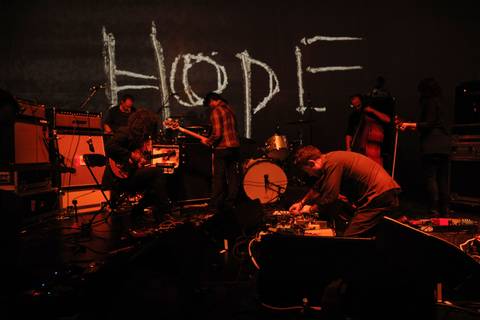Iranian-born visual artist
Shirin Neshat
, who has lived in the United States since 1974, gained worldwide renown beginning with her
photographic work
and
video installations
, which reflect on the
social structures of the Islamic world
, and the
situation of women in Iran
. Among other themes, her work in various media investigates issues of
gender
,
power
,
displacement
,
protest
,
identity
and the space between the personal and the political. The
two works on view
in Shirin Neshat’s
first solo exhibition
in Hungary demonstrate the range of her work in the medium of
video
.
Her early
black-and-white videos of the 1990s
are represented by
Rapture
(1999), a
two-channel video installation
, and her later works in color by
Zarin
(2005), which is part of a
five-piece series
(Mahdokht
,
Zarin
,
Munis
,
Faezeh
,
Farokh Legha), each dedicated to a female character. This project became the core of the artist’s prize-winning film
Women
Without Men (2009), based on Shahrnush Parsipur’s 1989 novel of the same title. Presenting Zarin from this series is no haphazard choice: the
prostitute
who lives on the periphery of society and then decides to flee is played by Orsi Tóth,
a Hungarian actress
known to quite a few cinema and theatre goers.
Both works display a
similar sensitivity
in their approach to
social issues
; however, while Rapture is marked by
stylized images
and a
surrealist effect
,
Zarin
is characterized by a
more realistic lens
. Neshat acknowledges that her works highlight the
controversies of the social structures in Iran and the Islamic world
, in particular the position of women. As an artist in exile, she aims to bridge
deeply personal issues
with critical social, political, and historical questions that concern the various worlds she inhabits, physically or otherwise.
Capturing and investigating opposing forces
– including masculine/feminine, mystical/political, poetry/violence, personal loss/social crisis – Neshat departs from overtly political content or critique in favor of exploring poetic imagery and complex human narratives.

Culture
Shirin Neshat Exhibition
Event details
1146, Budapest, Dózsa György út 37. Thursday, 13 February 2014 6.00pm - Sunday, 27 April 2014 8.00pm



